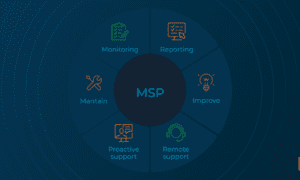Corporate relocation can be a daunting task filled with numerous challenges. However, with proper organization and planning, you can ensure a seamless transition. Staying productive during this time is important for both employees and employers. This guide outlines effective strategies to maintain order and productivity throughout the corporate moving process.
Assess Current Needs and Create a Moving Plan
Before initiating any relocation process, assess your current needs. Understanding what you require in the new location will streamline the process immensely. Begin by evaluating the size and layout of your current office space.
Consult your team about their workspace preferences and any equipment necessities. A detailed moving plan should arise from this assessment, outlining tasks, deadlines, and responsibilities. This blueprint will act as a roadmap, helping to keep everyone on track.
A well-structured timeline is vital. Implement milestones, setting deadlines for each major aspect of the relocation. This structured approach ensures every component is addressed and helps to maintain accountability among team members. Celebrate small achievements at each milestone, reinforcing the sense of progress and team cohesion.
Organize Inventory and Identify Storage Needs
Keeping track of your current office inventory is vital during a corporate relocation. Thus, create an inventory list for all furniture, equipment, and supplies. This document will be instrumental in deciding what to keep, discard, or replace. Regularly update this list to reflect any changes or newly found items as you prepare for the move.
During this stage, you may realize that certain items may require temporary storage. Whether you need Ipswich storage Tivoli, or other local options, evaluate the most appropriate facilities. Research and choose storage facilities equipped to protect your assets, ensuring they remain safe until you are ready to integrate them into your new office setup.
Communicate Effectively with Your Team
Effective communication plays a pivotal role in any successful corporate relocation. Inform your team about every stage of the moving process. Regular updates foster transparency and reduce anxiety related to the transition. Hold meetings to gather feedback and address concerns. Encouraging open discussion can significantly alleviate stress levels and boost morale.
Utilize various communication methods to cater to different preferences. Email updates, group chats, or dedicated platforms like Slack can serve as excellent tools to maintain ongoing discussions. Appoint a relocation coordinator to manage communications and ensure that everyone stays informed about vital developments.
Prioritize Employee Well-Being
Relocation can cause stress among employees, significantly impacting productivity. Prioritizing employee well-being is paramount. Provide resources such as counseling services or relocation assistance. Offer flexible work schedules to accommodate employees during this transition.
Celebrate the move as an exciting opportunity rather than a logistical nightmare. Host team-building activities, orientation sessions, or casual gatherings in the new office to foster camaraderie. These initiatives can help employees feel valued and positively engaged, resulting in higher productivity levels and a smoother transition.
Utilize Technology Efficiently
Modern technology offers various tools and software designed to help businesses streamline relocations. Use project management software to keep track of tasks. These platforms typically allow team members to assign responsibilities and monitor progress in real-time, enhancing accountability daily.
Implement digital communication tools as well. Apps facilitate instant messaging and document sharing, ensuring all team members stay connected regardless of location. Ensure everyone is comfortable with the tools to maximize their effectiveness.

Establish a Post-Move Follow-Up Plan
After completing the move, establishing a post-move follow-up plan keeps everything running smoothly. Schedule a review meeting 30 days after the move to discuss any challenges encountered. This meeting will allow the team to provide feedback and suggestions, valuable for future relocations or improvements.
Following up builds a culture of openness and continuous improvement. Ensure that everyone knows how to share their concerns or praises about the new workspace. By continuously adapting to the new environment, the company can foster a productive atmosphere, enhancing work satisfaction.
By implementing these strategies, your corporate relocation can turn from a stressful endeavor into a well-organized and productive experience. Staying proactive ensures a smooth transition and fulfills both organizational and employee needs as you navigate the moving process.

































